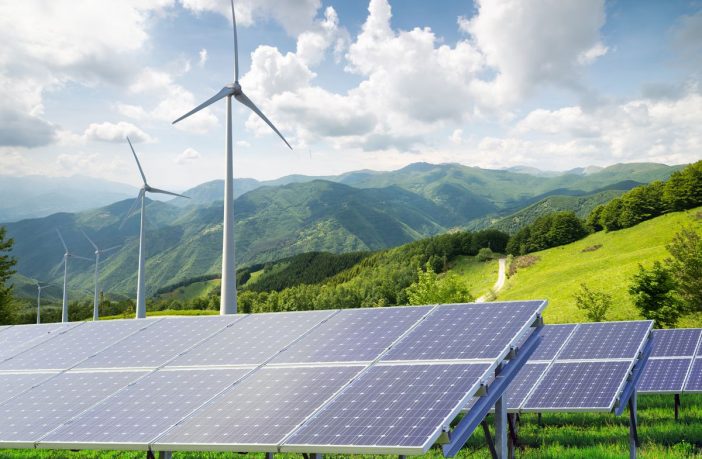- Global energy consumption in 2018 increased at nearly twice the average rate of growth since 2010 according to the International Energy Agency (IEA) Global Energy & CO2 Status Report.
- The demand has been driven by a robust global economy and higher heating and cooling needs in some parts of the world due to extreme weather events.
- Demand for all fuels increased, led by natural gas, even as solar and wind posted double-digit growth.
- Higher electricity demand was responsible for over half of the growth in energy needs.
- Energy efficiency saw lacklustre improvement.
- As a result of higher energy consumption, CO2 emissions rose 1.7% last year and hit a new record.
Energy consumption worldwide grew by 2.3% in 2018, nearly twice the average rate of growth since 2010, driven by a robust global economy as well as higher heating and cooling needs in some parts of the world.
The biggest gains came from natural gas, which emerged as the fuel of choice last year, accounting for nearly 45% of the increase in total energy demand. Demand for all fuels rose, with fossil fuels meeting nearly 70% of the growth for the second year running. Renewables grew at a double-digit pace, but still not fast enough to meet the increase in demand for electricity around the world.
As a result of higher energy consumption, global energy-related CO2 emissions increased to 33.1 Gt CO2, up 1.7%. Coal-fired power generation continues to be the single largest emitter, accounting for 30% of all energy-related carbon dioxide emissions.
Higher energy demand was propelled by a global economy that expanded by 3.7% in 2018, a higher pace than the average annual growth of 3.5% seen since 2010. China, the United States, and India together accounted for nearly 70% of the rise in energy demand.
The United States had the largest increase in oil and gas demand worldwide. Gas consumption jumped 10% from the previous year, the fastest increase since the beginning of IEA records in 1971. The annual increase in US demand last year was equivalent to the United Kingdom’s current gas consumption.
Weather conditions last year were also responsible for almost a fifth of the increase in global energy demand as average winter and summer temperatures in some regions approached or exceeded historical records. Cold snaps drove demand for heating and, more significantly, hotter summer temperatures pushed up demand for cooling.
Trends by technology
Global gas demand expanded at its fastest rate since 2010, with year-on-year growth of 4.6%. Oil demand grew 1.3% and coal consumption rose 0.7%. Oil and coal together accounted for a quarter of global demand growth.
Renewables, which grew by over 4%, met around one-quarter of the growth in total primary energy demand. This was largely due to expansion in electricity generation, where renewables accounted for 45% of the growth in 2018.
Nuclear also grew by 3.3% in 2018, mainly as a result of new capacity in China and the restart of four reactors in Japan. Worldwide, nuclear generation met 7% of the increase in energy demand.
Electricity continues to assert itself as the “fuel” of the future, with global electricity demand growing by 4% in 2018 to more than 23 000 TWh. This rapid growth is pushing electricity towards a 20% share in total final consumption of energy. Increasing power generation was responsible for a little more than half of the growth in primary energy demand.
Oil and coal grew at similar levels, with significant growth in coal-fired power generation more than offsetting declines in coal use elsewhere.
Reading into the report, one soon realises that while renewable energy rollout has increased, it is not replacing fossil fuel generation. At the same time, extreme weather events caused by climate change is driving energy demand up. This has caused the carbon intensity of electricity generation to increase.
So what we need is a faster rollout of larger generation projects that emit zero carbon emissions. Nuclear technology can do this but until somebody figures out the deep time consequences of nuclear waste storage and makes it 100% safe, there will be no public buy-in.
Under the IEA’s Sustainable Development Scenario, the world would need to add 17 gigawatts of nuclear capacity every year, nearly doubling the current global fleet by 2040 to meet global carbon emission goals. Unlike wind and solar technologies which provide variable loads according to weather conditions, nuclear power provides steady base load, eliminating the need for costly transmission upgrade and storage.
But according to Climate Nexis, the levelised cost of nuclear power is relatively high compared to other energy sources: the minimum cost per megawatt hour to build a new nuclear plant is US112, compared to US46 for utility-scale solar, US42 for combined cycle gas, and US30 for wind. Read more
The use of gas to substitute coal is gaining momentum and it is the lesser of the two evils when it comes to carbon emissions. Natural gas emits 50 to 60 per cent less carbon dioxide (CO2) when combusted in a new, efficient natural gas power plant compared with emissions from a typical new coal plant. Read more
So where does this leave us? There is no real answer because there is no clear consensus. It is clear that we need to roll out wind and solar projects on a bigger and quicker scale. We also need to improve efficiency in energy use. Gas and nuclear can accelerate the process however until policymakers, financial institution and companies’ combined to serve a single net zero power generation goal, we will continue to chase our tails and lose the battle.
Link to IEA Global Energy & CO2 Status Report.
Author: Bryan Groenendaal















